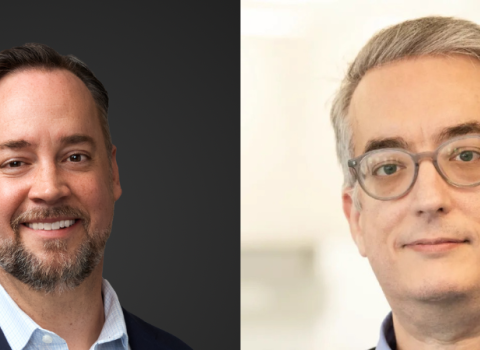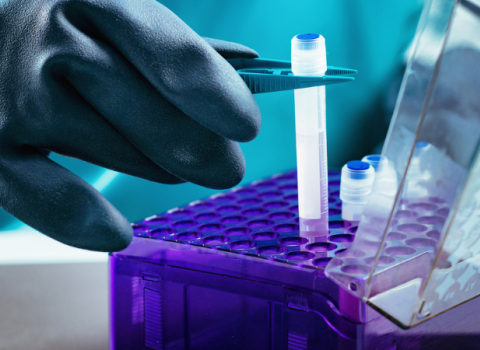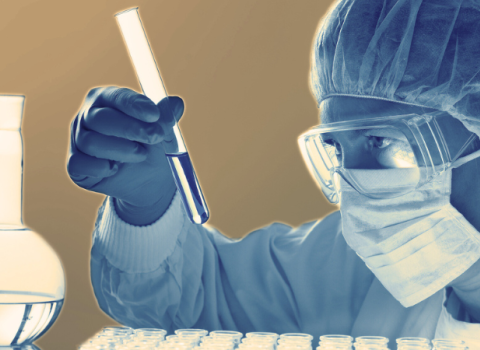University contributes to scientific breakthrough for cancer patients
Associate Professor in computer science, Nasir Rajpoot and his team have contributed to a high-tech computer system based at University Hospitals Coventry and Warwickshire NHS Trust (UHCW) able to read samples of human tissue and pick up on minute changes. More than 10,000 slides were examined in the first phase of the study.
Dr Rajpoot said: “This is a very exciting development in the field of digital pathology. What it means is that we can now move forward with the application of digital pathology image analysis algorithms in a clinical setting. For instance, computer algorithms can automate the process of detecting normal samples so that some routine cases will not need to be looked at by a pathologist at all.
“Together with the team at UHCW, we are looking forward to developing technologies for computer-assisted diagnosis and image analytics for discovering biologically meaningful and clinically relevant signatures of cancer.”
The ground breaking technology has the power to grade some types of tumours, including lung prostate and bladder tumours more accurately than ever before. In prostate cancer this could make the difference between someone being offered surgery rather than drug based treatments.
Consultant histopathologist at UHCW David Snead said: “I am delighted that University Hospital, Coventry has led this ground breaking study. This gives the best evidence to date that digital pathology really works, and works well. The introduction of digital pathology has fantastic potential benefits for patients, as we can expect to be able to read samples more quickly and better than before. The big advantage is that we can use the computer to help us see detect things we can’t see with the microscope, so for some patients this will change in how their disease is managed.”
The Omnyx® Precision Solution™, digitises slides which are traditionally placed on a microscope so that Pathologists can look at them on a computer. Once on the computer the UHCW scientists can separate normal from abnormal samples.
University Hospitals Coventry and Warwickshire NHS Trust is the first hospital in the UK to introduce this kind of innovation to its routine practice, meaning it is already benefitting patients.
Welcoming the study, Mamar Gelaye, CEO of Omnyx said : “Dr Snead and his team have made an extremely significant contribution to showing the value of digital pathology for both clinicians and patients. We are only at the beginning of harnessing the benefits of digitising pathology services, such as image share-ability and clinician collaboration, and we look forward to working with institutions like University Hospitals Coventry and Warwickshire NHS Trust to achieve even greater progress in delivering more accurate and efficient cancer diagnoses.”
Dr Rajpoot said: “This is a very exciting development in the field of digital pathology. What it means is that we can now move forward with the application of digital pathology image analysis algorithms in a clinical setting. For instance, computer algorithms can automate the process of detecting normal samples so that some routine cases will not need to be looked at by a pathologist at all.
“Together with the team at UHCW, we are looking forward to developing technologies for computer-assisted diagnosis and image analytics for discovering biologically meaningful and clinically relevant signatures of cancer.”
The ground breaking technology has the power to grade some types of tumours, including lung prostate and bladder tumours more accurately than ever before. In prostate cancer this could make the difference between someone being offered surgery rather than drug based treatments.
Consultant histopathologist at UHCW David Snead said: “I am delighted that University Hospital, Coventry has led this ground breaking study. This gives the best evidence to date that digital pathology really works, and works well. The introduction of digital pathology has fantastic potential benefits for patients, as we can expect to be able to read samples more quickly and better than before. The big advantage is that we can use the computer to help us see detect things we can’t see with the microscope, so for some patients this will change in how their disease is managed.”
The Omnyx® Precision Solution™, digitises slides which are traditionally placed on a microscope so that Pathologists can look at them on a computer. Once on the computer the UHCW scientists can separate normal from abnormal samples.
University Hospitals Coventry and Warwickshire NHS Trust is the first hospital in the UK to introduce this kind of innovation to its routine practice, meaning it is already benefitting patients.
Welcoming the study, Mamar Gelaye, CEO of Omnyx said : “Dr Snead and his team have made an extremely significant contribution to showing the value of digital pathology for both clinicians and patients. We are only at the beginning of harnessing the benefits of digitising pathology services, such as image share-ability and clinician collaboration, and we look forward to working with institutions like University Hospitals Coventry and Warwickshire NHS Trust to achieve even greater progress in delivering more accurate and efficient cancer diagnoses.”





 A unique international forum for public research organisations and companies to connect their external engagement with strategic interests around their R&D system.
A unique international forum for public research organisations and companies to connect their external engagement with strategic interests around their R&D system.